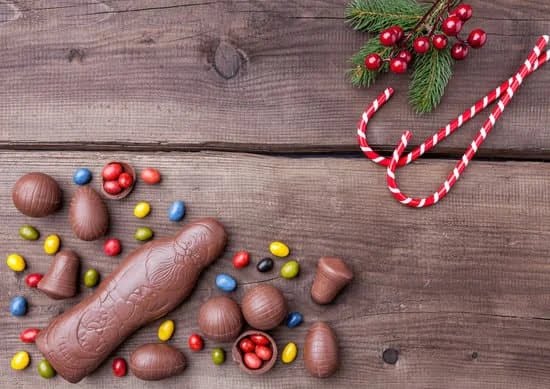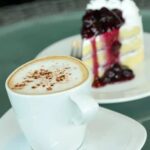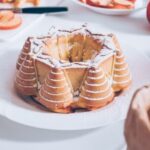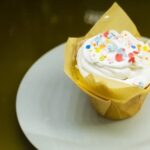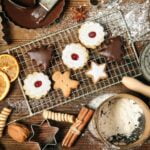The world of cake decorating is a fascinating and enchanting realm, where creativity meets culinary artistry. From intricately designed wedding cakes to whimsical birthday creations, cake decorating has become a popular avenue for self-expression and celebration. In this article, we will delve into the art and delicacy of all things cake decorating, exploring its growing popularity and the allure of creating stunning and unique cakes.
Over the years, cake decorating has evolved from a simple practice to an impressive skill that requires precision, patience, and imagination. With the rise of social media platforms showcasing breathtaking cake designs, more and more people are finding inspiration to try their hand at this captivating art form.
Whether you’re a beginner seeking to master the fundamentals or an experienced decorator looking to take your skills to the next level, there are endless possibilities in the world of cake decorating.
One of the most exciting aspects of cake decorating is the wide range of tools and materials available. From piping bags and tips to fondant molds and edible decorations, there are essential tools that every cake decorator should have in their arsenal.
Additionally, various types of frosting, fondant, and edible paints allow decorators to bring their imaginative visions to life. In this article, we will explore these tools and materials in depth, highlighting their significance in creating beautiful and delectable works of art.
Intrigued by the tantalizing world of cake decorating? Join us as we embark on a journey through techniques both basic and advanced. Whether you are aiming for flawlessly iced cakes or exploring intricate piping techniques for creating intricate designs, our step-by-step guide will assist you in mastering these fundamental techniques.
We will also dive into advanced techniques like fondant sculpting and painting while learning how to craft delicate sugar flowers and edible lace. The possibilities within cake decoration are limitless-so let’s get started.
Essential Tools and Materials for the Cake Decorating Enthusiast
Cake decorating is not only a delicious form of art but also requires essential tools and materials to create stunning and unique designs. Whether you are a beginner or an experienced decorator, having the right tools and materials can make all the difference in achieving professional-looking results.
One of the most important tools for cake decorating is a good set of piping tips. These small metal nozzles come in various shapes and sizes, allowing decorators to create different patterns and textures with buttercream, royal icing, or even chocolate ganache. Some popular piping tip styles include round tips for writing and outlining, star tips for rosettes and borders, and petal tips for creating beautiful flowers.
In addition to piping tips, another essential tool is an offset spatula. This angled spatula is perfect for smoothing frosting on cakes, creating sharp edges, and even spreading fillings or sauces. It helps decorators achieve a flawless finish by ensuring that the frosting is evenly spread across the cake’s surface.
Apart from these tools, there are several types of materials that play a crucial role in cake decorating. Frosting is one such material that acts as the canvas for decorators to work their magic on. Buttercream frosting is versatile and commonly used for classic cake designs. On the other hand, Swiss meringue buttercream provides a smoother finish. Fondant is another popular choice that allows decorators to create sleek and flawlessly decorated cakes.
Finally, edible decorations such as fondant accents or sugar pearls add the finishing touches to beautifully decorated cakes. These decorations can be handmade or store-bought and come in various shapes, colors, and sizes.
| Essential Cake Decorating Tools | Essential Cake Decorating Materials |
|---|---|
| Piping tips | Frosting (buttercream, fondant) |
| Offset spatula | Edible decorations (fondant accents, sugar pearls) |
Having these essential tools and materials in your cake decorating toolkit will set you on the path to creating beautifully decorated cakes. As you gain more experience, you can expand your collection and explore more advanced techniques, but starting with these basics is essential for achieving professional results. So gather your tools, unleash your creativity, and embark on the exciting journey of cake decorating.
Basic Cake Decorating Techniques
When it comes to cake decorating, mastering the basics is essential for creating beautiful cakes. Whether you are a beginner or have some experience, these fundamental techniques will help you achieve professional-looking results. In this section, we will guide you through step-by-step instructions to smoothly and flawlessly ice a cake, as well as explore various piping techniques for borders, flowers, and designs.
Icing a Cake: Step-by-Step Guide
One of the first skills every cake decorator should learn is how to properly ice a cake. This technique creates a smooth canvas for further decorations and provides a polished look to your finished product. Here’s a step-by-step guide to icing a cake like a pro:
- Level the Cake: Before icing your cake, make sure it is leveled by trimming any uneven edges. This will ensure an even layer of frosting and prevent any misshapen appearance.
- Secure the Cake: Place strips of parchment paper along the edge of your serving plate or turntable to keep it clean during the decorating process. Then, secure your cake in place using a small dollop of frosting on the plate.
- Crumb Coat: Apply a thin layer of frosting called the crumb coat. This helps seal in any loose crumbs and ensures a smooth surface for your final layer of frosting. Use an offset spatula to spread the frosting evenly across all sides and top of the cake.
- Final Layer: Once your crumb coat has set (about 15 minutes in the refrigerator), apply your final layer of frosting using an offset spatula or bench scraper. Start with generous scoops on top of the cake and gently push them towards the edges using long strokes.
- Smoothing Technique: Achieve that perfect smooth finish by using a bench scraper or straightedge spatula held at an angle against the side of your cake. Rotate the turntable or plate while holding the bench scraper steady for a consistent and even result.
Piping Techniques: Adding Beautiful Borders, Flowers, and Designs
Piping is an essential skill in cake decorating that allows you to add intricate borders, flowers, and designs to your cakes. Here are some popular piping techniques you should master:
- Shell Border: Using a large round piping tip, create a shell-like border by squeezing out a small amount of frosting while moving in a semicircular motion.
- Rosettes: Create beautiful rosettes by using a star-shaped piping tip such as a Wilton 1M. Starting from the center of the desired flower, apply pressure while swirling clockwise in concentric circles until you achieve your desired size.
- Writing: To add personalized messages or names on your cakes, use a small round piping tip and practice writing on parchment paper first. Apply gentle pressure while using consistent movements to pipe out your words or design.
- Filigree Piping: For delicate lace-like designs, use a small round piping tip to create intricate filigree patterns on the sides of your cakes. It requires patience and control for achieving precise detail.
By mastering these basic cake decorating techniques, you will have a solid foundation to build upon as you continue to develop your skills. With practice and creativity, you can elevate your cake decorations and create stunning edible works of art that will leave everyone impressed.
Advanced Cake Decorating Techniques
As you become more experienced in cake decorating, you may find yourself wanting to take your skills to the next level. Advanced cake decorating techniques allow you to create even more intricate and stunning designs that will leave everyone impressed. In this section, we will introduce you to some of these techniques and provide valuable tips for mastering them.
Fondant Sculpting and Painting
One of the most popular advanced cake decorating techniques is fondant sculpting. Fondant is a pliable icing that can be shaped into various figures and objects. With fondant sculpting, you can bring your cakes to life with three-dimensional elements such as flowers, animals, or even people. It requires patience and precision, but the end result is worth it.
To begin, make sure your fondant is kneaded well and evenly colored. Plan out your design beforehand and start by creating a rough shape of the object using larger pieces of fondant. Gradually add smaller pieces and use tools like sculpting tools or even toothpicks to add details such as facial features or textures.
Once your sculpture is complete, consider adding color with edible paints or dusts. You can use food-safe brushes or airbrushes specifically designed for cake decorating. This technique allows you to add depth and realism to your sculpted figures.
Creating Intricate Sugar Flowers
Another advanced technique that adds elegance and sophistication to cakes is creating sugar flowers. These delicate decorations are made entirely out of sugar paste and replicate real flowers in stunning detail. While this technique takes time and practice, the results are truly breathtaking.
To create sugar flowers, start by making a flower paste using ingredients like gum tragacanth or tylose powder mixed with fondant or gum paste. This will give your flowers stability while still allowing them to look realistic.
Next, choose a flower that you want to recreate and study its shape, color, and details. You can use flower cutters or silicone molds to shape the petals and leaves. Use edible dusts or gel food colors mixed with clear alcohol (such as vodka) to add color and shading. Finally, assemble the various pieces together using edible glue or royal icing.
Edible Lace
Edible lace is a technique that adds elegance and sophistication to any cake design. It involves creating delicate lace patterns using lace molds and is often used on wedding cakes or for vintage-inspired designs.
To create edible lace, start by rolling out a lace paste onto a silicone lace mat. The lace paste can be made using ingredients like sugar paste, gum tragacanth, or gelatin mixed with water. Press the paste into the mold firmly, making sure it covers all the intricate details of the design.
Once the lace is set, carefully remove it from the mold and trim off any excess using a sharp knife or scissors. The lace can then be attached to your cake using edible glue or royal icing. Edible dusts can be brushed over the lace to add color or shimmer.
By exploring these advanced cake decorating techniques such as fondant sculpting, creating intricate sugar flowers, and working with edible lace, you can truly elevate your skills and create show-stopping designs that will amaze everyone who sees them. With practice, patience, and attention to detail, you’ll soon be able to take your cakes from beautiful to extraordinary.
Cake Decorating Themes and Trends
Cake decorating is not only about creating beautiful and delicious cakes, but also staying up-to-date with the latest themes and trends. By being aware of what is popular in the cake decorating world, decorators can offer their clients unique and trendy designs that will impress and delight. This section will explore some of the popular cake decorating themes as well as the current trends in cake designs and decorations.
One popular cake decorating theme is rustic, which has gained a lot of attention in recent years. Rustic cakes often feature natural elements such as wood grain textures, burlap ribbon accents, and fresh flowers or foliage. These cakes have a charming and romantic feel and are perfect for weddings or other outdoor-themed events. To achieve a rustic look, decorators may use techniques like buttercream frosting with textured finishes or incorporating organic elements into the design.
Another popular theme in cake decorating is vintage. Vintage-inspired cakes take inspiration from past eras and often incorporate delicate lace patterns, soft colors, and antique accents such as brooches or pearls. These cakes have a classic and elegant aesthetic that is timeless. Decorators may use techniques like piping intricate lace details or hand-painting vintage motifs to achieve a vintage look.
On the other end of the spectrum, modern cake designs are also gaining popularity. These cakes often feature clean lines, bold colors, and unique geometric shapes. Modern designs embrace simplicity and minimalism while making a strong visual impact. Techniques like smooth fondant finishes or using geometric molds can help decorators achieve a modern look.
In terms of current trends in cake decorating, floral designs are having a moment. From realistic sugar flowers to whimsical buttercream blooms, flowers are being used to add beauty and elegance to cakes across various themes. Metallic accents such as gold or silver leafing are also trending in cake decorating. Adding metallic elements can create a luxurious and glamorous look that catches the eye.
By staying up-to-date with these themes and trends in cake decorating, decorators can offer clients innovative and exciting designs. Whether it’s embracing the charm of rustic, the elegance of vintage, or the boldness of modern designs, incorporating these themes and trends into cake decorating can elevate the artistry and appeal of every creation.
- Rustic cakes featuring natural elements such as wood grain textures, burlap ribbon accents, and fresh flowers or foliage
- Vintage-inspired cakes with delicate lace patterns, soft colors, and antique accents like brooches or pearls
- Modern cake designs with clean lines, bold colors, and unique geometric shapes
- Floral designs including realistic sugar flowers or whimsical buttercream blooms
- Metallic accents such as gold or silver leafing for a luxurious touch
Cake Decorating for Special Occasions
Cake decorating is not only a delicious craft but also a way to make special occasions even more memorable. Whether it’s a birthday, wedding, or holiday celebration, a beautifully decorated cake can be the centerpiece of the event. In this section, we will explore cake decorating ideas and tips for various celebrations.
Birthday Cakes
Birthdays are the perfect occasion to showcase your creativity in cake decorating. Here are some ideas to make that birthday cake extra special:
- Theme-based cakes: Choose a theme based on the person’s interests, such as sports, movies, or hobbies. Use themed decorations like fondant figurines or edible images to bring the theme to life.
- Number cakes: Celebrating a milestone birthday? Create a number-shaped cake with layers of different flavors and colors. Decorate it with icing or candies that match the birthday person’s taste.
- Cupcake towers: Instead of a traditional single-tiered cake, consider making a cupcake tower with beautifully decorated individual cupcakes. It allows guests to choose their preferred flavor and creates an impressive display.
Wedding Cakes
Wedding cakes hold significant importance during this joyous occasion. Here are some ideas for creating stunning wedding cakes:
- Classic elegance: Opt for a classic white tiered cake adorned with delicate sugar flowers or intricate lace designs. This timeless style will never go out of fashion.
- Personalized details: Incorporate elements from the couple’s love story or shared interests into the design. Add initials, monograms, or symbols that hold sentimental value for them.
- Unique textures: Experiment with textured buttercream or fondant finishes like ruffles, rosettes, or geometric patterns. These add depth and visual interest to the cake.
Holiday Cakes
During festive seasons, cakes can reflect the spirit of celebration. Consider these ideas when decorating holiday-themed cakes:
- Christmas cakes: Create a winter wonderland with snowflake patterns, edible ornaments, or a fondant Santa Claus. Use seasonal flavors like peppermint or eggnog to add an extra touch of holiday cheer.
- Halloween cakes: Get creative with spooky designs like a graveyard scene, vampire-inspired cake, or carved pumpkin-shaped cake. Playfully use colors like orange, black, and purple to capture the Halloween spirit.
- Easter cakes: Celebrate the arrival of spring with pastel-colored cakes topped with sugar flowers, eggs, bunnies, or chicks. Create a whimsical garden-inspired design that reflects the joy of the season.
Remember, the key is to personalize your cake to fit the occasion and the person or couple being celebrated. Let your imagination run wild and have fun while creating edible works of art that will be cherished by all who gather to celebrate.
Troubleshooting Common Cake Decorating Issues and How to Fix Them
Cake decorating can be a thrilling and rewarding hobby, but it doesn’t come without its challenges. From frosting mishaps to cracked fondant, decorators often encounter common issues that can leave them feeling frustrated. However, with the right knowledge and techniques, these problems can be easily fixed. In this section, we will address some of the most common cake decorating issues and provide helpful tips on how to troubleshoot and fix them.
One common problem that decorators may face is air bubbles in their icing or fondant. These air bubbles can create an uneven surface on the cake and ruin the overall appearance. To fix this issue, start by gently tapping the surface of the cake with a small needle or pin.
This will release any trapped air bubbles and smooth out the icing or fondant. Be careful not to apply too much pressure, as this can cause additional damage to the cake.
Another frequent challenge is achieving a smooth and flawless finish when icing a cake. Uneven or lumpy frosting can detract from the visual appeal of your creation. To remedy this issue, consider investing in an offset spatula or a bench scraper.
These tools allow you to spread the icing evenly across the surface of the cake, resulting in a smooth finish. Start by applying a thin layer of icing as a base coat, then use long strokes to spread another layer of icing over the cake until it is smooth and free from imperfections.
Cracked fondant is yet another frustration encountered by many decorators. Fondant can crack if it becomes too dry or if it is rolled too thinly. To prevent cracking, make sure to knead your fondant thoroughly before rolling it out to ensure it is soft and pliable.
When rolling out your fondant, use powdered sugar or cornstarch to prevent sticking, but be cautious not to add too much as it can dry out the fondant. If your fondant does crack while applying it to your cake, you can try gently pressing the cracked edges together or using a small brush to apply a bit of water as adhesive.
By addressing and overcoming these common cake decorating issues, decorators can enhance the overall appearance and quality of their creations. Troubleshooting challenges in cake decorating is an essential skill that every aspiring decorator should develop. With practice and patience, you’ll be able to master the art of troubleshooting and create beautiful cakes that will dazzle your friends and family.
| Common Cake Decorating Issue | Solution |
|---|---|
| Air bubbles in icing or fondant | Gently tap the surface with a pin to release trapped air bubbles |
| Uneven or lumpy frosting | Use an offset spatula or bench scraper to spread icing evenly |
| Cracked fondant | Knead fondant thoroughly before rolling, use powdered sugar for rolling, and gently press cracked edges together if it cracks during application. |
The Business of Cake Decorating
Cake decorating is not only a beloved hobby but also a potential career path for those who have a passion for this art form. With the growing popularity of custom-designed cakes and the demand for unique creations, many cake decorators are finding success in turning their passion into a profession. This section will explore the possibilities of starting a cake decorating business and provide tips for those interested in building a successful career in this field.
One of the first steps in starting a cake decorating business is honing your skills and gaining experience. While natural talent and creativity are important, it is also crucial to learn various techniques and master the fundamentals of cake decorating. Taking classes or workshops, practicing consistently, and seeking guidance from experienced decorators can help improve your skills and build a strong foundation.
Once you feel confident in your abilities, it’s essential to develop a business plan. This includes determining your target market, creating a budget, setting prices for your services, and establishing goals for growth. Researching local regulations and obtaining any necessary licenses or permits should also be part of your planning process.
Marketing plays a vital role in running a successful cake decorating business. Utilize social media platforms such as Instagram or Facebook to showcase your work and connect with potential customers. Creating an attractive website or blog can also help attract clients and provide them with information about your services.
Lastly, it’s important to prioritize customer satisfaction. Providing exceptional customer service, meeting deadlines, and delivering high-quality products will earn you positive reviews and loyal customers. Word-of-mouth recommendations can significantly contribute to the success of your business.
While turning your passion for cake decorating into a profession requires hard work, dedication, and perseverance, it can be an incredibly rewarding journey. The opportunities for creativity are endless, and being able to bring joy to people’s celebrations through beautifully decorated cakes is truly fulfilling.
Cake Decorating Inspiration
In the world of cake decorating, inspiration can be found all around us. From nature’s beauty to artistic masterpieces, the possibilities for creative designs are endless. This section will showcase some of the best and most creative cake decorations that will inspire anyone in their cake decorating journey.
Expert decorators and enthusiasts alike have been pushing the boundaries of imagination when it comes to cake designs. From whimsical fairy-tale themes to realistic replicas of famous landmarks, these cakes are true works of art. One popular trend in recent years is the use of edible paint to create intricate designs that resemble watercolor paintings. Another trend is the incorporation of geometric shapes and metallic accents for a modern and sophisticated look.
One remarkable example of creative cake decoration is the use of gravity-defying techniques. These cakes seem to defy physics as they lean at impossible angles or appear suspended in mid-air, all while maintaining their structural integrity. These gravity-defying creations often feature whimsical characters or objects that add an element of surprise and delight.
Another source of inspiration comes from showcasing cakes that celebrate cultural diversity. Decorators draw upon different cultures’ traditions, symbols, and motifs to create stunning designs that pay homage to their heritage. Whether it is a beautifully crafted henna-inspired design or a vibrant display of traditional Chinese symbolism, these cakes serve as a reminder of the richness and diversity in our world.
By showcasing these incredible designs, we hope to inspire readers to push their own boundaries and experiment with new techniques and ideas in their cake decorating endeavors. Remember that every masterpiece starts with a spark of creativity. So go ahead, let your imagination soar, and create your own unique and unforgettable cake decorations.
Conclusion
In conclusion, the world of cake decorating offers endless possibilities for creativity and self-expression. Whether you are a beginner or an experienced decorator, there is always something new to learn and explore. By mastering essential tools, techniques, and materials, you can create stunning and unique cakes that will impress everyone around you.
One of the key aspects of cake decorating is embracing your own creativity. Don’t be afraid to experiment with different designs, color combinations, and themes. Let your imagination run wild as you create edible works of art that reflect your personality and style. The beauty of cake decorating is that every cake is a blank canvas waiting to be transformed into something extraordinary.
Furthermore, the joy and satisfaction that come from creating a visually stunning cake cannot be understated. From the initial planning stages to putting the finishing touches on your masterpiece, every step in the process is an opportunity for self-expression and fulfillment. Whether it’s icing a cake smoothly or sculpting intricate sugar flowers, each technique mastered brings a sense of accomplishment.
So go ahead and dive into the world of all things cake decorating. Allow yourself to get lost in this delicious art form that continues to captivate people all over the world. With passion, dedication, and a pinch of creativity, you can become a master decorator capable of creating awe-inspiring cakes that will leave everyone amazed. Start gathering your tools, experimenting with different techniques, and exploring popular trends – let your love for cake decorating take center stage.
Frequently Asked Questions
What are the 5 kinds of cake decorating?
The five kinds of cake decorating include buttercream, fondant, royal icing, gum paste, and marzipan. Buttercream is a popular choice for its creamy texture and ability to be piped into various designs. Fondant is a smooth and pliable icing that can be rolled out and draped over cakes for a flawless finish.
Royal icing is made from confectioners’ sugar and egg whites, creating a firm and glossy icing commonly used for intricate piping work. Gum paste is a modeling paste that dries hard, allowing for the creation of delicate decorations such as flowers or figurines. Lastly, marzipan is an almond-based paste that can be molded into shapes or rolled out and applied to cakes.
What are the things used to decorate a cake?
When it comes to cake decoration, there are numerous tools and ingredients utilized to achieve desired designs. Some common items include piping bags and tips for creating various patterns with buttercream or royal icing. Spatulas are used for spreading frosting or smoothing surfaces on the cake.
Different shaped cutters are employed to make specific shapes from fondant or gum paste. Edible colors such as food coloring or gel colors add vibrancy to the design while edible glitter or sprinkles provide sparkle and texture. Other tools like brushes, stencils, molds, and ribbons may also be employed depending on the desired cake decoration style.
Is there a masterclass for cake decorating?
Yes, there are masterclasses available specifically tailored towards cake decorating skills. These masterclasses offer an opportunity for aspiring decorators or experienced bakers looking to enhance their techniques to learn from seasoned professionals in the field. In these classes, participants have the chance to gain invaluable knowledge about advanced techniques in cake designing, mastering specific decorative methods like intricate piping work or fondant sculpting.
Masterclasses typically encompass both theoretical instruction along with hands-on practice opportunities where participants can receive direct guidance from experts while working on their own creations. These classes provide a platform for decorators to refine their skills, learn new trends, and explore innovative ideas in the art of cake decoration.

Welcome to our cake decorating blog! My name is Destiny Flores, and I am the proud owner of a cake decorating business named Cake Karma. Our mission is to provide delicious, beautiful cakes for all occasions. We specialize in creating custom cakes that are tailored specifically to each customer’s individual needs and tastes.

